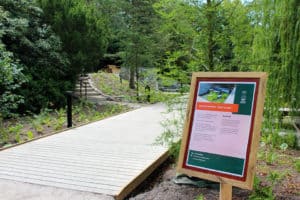The UK is full of beautiful areas jam-packed with history and heritage, and it is a top priority to preserve and protect these spaces. If there is an area of particular historic and architectural interest then it will be termed a conservation area. This distinction was started in the 1960s and there are now roughly 10,000 conservation areas in England.
Different conservation sites might include:
- Old housing estates or suburbs
- Country estates
- Centre of old towns and villages
- Landmarks
While this has meant the preservation of a lot of history, if you are building in a conservation area it can throw a spanner in the works as there is different legislation and approvals you will need to think of. Can you still build in a conservation area? The answer essentially is yes, depending on your project and also the methods you choose to complete the project. Let’s have a look at some things you need to think about.
What work do you need permission for?
Some of the work you will need to get planning permission for in a conservation area is:
- Demolition of buildings and structures
- Extensions or alterations
- Cladding of parts of the building
- Added solar panels or chimney
Small works that are usually fine under the Permitted Development Work may be slightly different if your building is covered by Article 4 direction. Normally this size project would not need planning permission, but with Article 4 you will need to get permission to have development work done.
An important thing to remember is that you cannot demolish or move any building or structure in the area without permission from the council. This can also apply at times to part of a building, not just the whole building, so better to be safe than sorry and speak to your local council before doing any such work.
One other thing to keep in mind is often these conservation areas also have protection in place for the trees, groups of trees or woodlands in that area. A Tree Preservation Order may be passed which would prohibit the cutting down, lopping, uprooting, topping and willful damage of these trees. If you want to develop in an area that has a TPO you will need to have written consent from the local planning authority.
Think of your materials
When you are applying for permission to undertake a new project, showing understanding of the area and its history can go a long way to being granted an OK. Have a look at the local area and see if you can see themes when it comes to design and also materials. It could possibly have a contemporary look but will need to be a build that helps conserve the character of the building and area. Your local conservation officer is passionate about the area and can be helpful, so get in touch with them as soon as possible for some help and advice.
Ground screws can be a great solution when building in conservation areas as they do not damage the ground. Often they can also overcome the issue of Tree preservation orders (TPO’s) as the screws can be installed around the roots so they do not cause damage.
Quick, easy and environmentally friendly, ground screws are a great way to create structures while honouring the heritage of the area.
Ground screws are perfect for walkways, fencing, decking, buildings, park equipment and much more. Take a look at some examples below of our screws in conservation areas.


If you would like some more information or advice about building small structures in a conservation area contact us at: SALES@STOPDIGGING.CO.UK or 020 3970 3979





